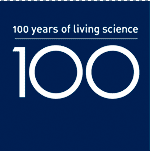Anthony Smart
1964 London to Brighton HCVC Rally
In the Spring of 1964, I had the rare privilege of driving ‘Jezebel’, the Royal College of Science mascot, a 1916 Dennis fire engine on the London to Brighton Heavy Commercial Vehicle Commemorative Rally. The trip started well, it was not even raining. The external 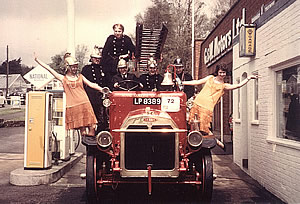 brass was polished to mirror perfection. Our brass helmets gleamed under the heavy cloud, and our dark uniforms kept us tolerably warm in the chilly blast offered by turbulence around the ladder and the absence of any closed superstructure. The more courageous of us had taken girlfriends along – mine, a thin blonde history student, was always cold anyway. The sponsor of the Rally had however provided young ladies lightly clad in 1920’s frippery in peach and fringes, and these disported themselves whenever a photographic opportunity offered, between times scurrying back to their van and sweaters to thaw. (Photograph above; Anthony, etc. Brighton Run)
brass was polished to mirror perfection. Our brass helmets gleamed under the heavy cloud, and our dark uniforms kept us tolerably warm in the chilly blast offered by turbulence around the ladder and the absence of any closed superstructure. The more courageous of us had taken girlfriends along – mine, a thin blonde history student, was always cold anyway. The sponsor of the Rally had however provided young ladies lightly clad in 1920’s frippery in peach and fringes, and these disported themselves whenever a photographic opportunity offered, between times scurrying back to their van and sweaters to thaw. (Photograph above; Anthony, etc. Brighton Run)
The previous week Jezebel had been given a test drive by a burly and bearded chemistry student, who was heavy on the gears, manipulated by a yard-long brass lever outboard 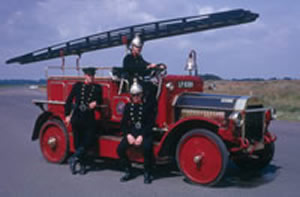 to the right, and even more so upon the accelerator, in the middle between clutch and the brake, which was on the right. It was a transmission brake and startlingly effective at stopping the rear wheels from turning, but since all the tires were solid, and the damp cobbled roads of South London were reminiscent of buffed ice, caution was necessary. The test drive had initiated a curious ticking noise that someone suggested might be big-ends, but nobody took any notice of me, so we changed the oil and set off anyway. (Photograph above; Dave Evans, Paul Ward at Biggin Hill with Jez)
to the right, and even more so upon the accelerator, in the middle between clutch and the brake, which was on the right. It was a transmission brake and startlingly effective at stopping the rear wheels from turning, but since all the tires were solid, and the damp cobbled roads of South London were reminiscent of buffed ice, caution was necessary. The test drive had initiated a curious ticking noise that someone suggested might be big-ends, but nobody took any notice of me, so we changed the oil and set off anyway. (Photograph above; Dave Evans, Paul Ward at Biggin Hill with Jez)
The engine was almost 9.2 litres, 4-cylinder, with dual ignition. To start it, one opened the cylinder cocks, dribbled a teaspoonful of petrol into each, carefully aligned #1 piston marginally past top dead centre, switched on battery assist for the magneto and gave the starting handle a very considerable twist with whichever foot one preferred not to land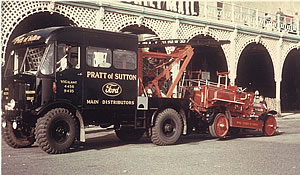 on. If all does not go well the engine backfires lifting the starting handle operator several feet into the air – using a rope deprives one of the essential control – and producing a yard long jet of flame from the carburettor intake. On better occasions the engine roars to life and one has about fifteen seconds to close the cylinder cocks to sustain operation, four miles to the gallon, one on the first. Later, it became a matter of pride to complete the starting ritual with the manually introduced fuel, the cylinder cocks closed, and the #1 cylinder a few degrees further beyond TDC. With perfect timing the application of the battery ignition alone produced a flawless start without any other intervention. It usually earned a round of applause from onlookers, one of which was once Queen Elizabeth, the Queen Mother, before she ruined her coat on the wet paint. (Photograph above; Jez, towed by Pratt of Sutton)
on. If all does not go well the engine backfires lifting the starting handle operator several feet into the air – using a rope deprives one of the essential control – and producing a yard long jet of flame from the carburettor intake. On better occasions the engine roars to life and one has about fifteen seconds to close the cylinder cocks to sustain operation, four miles to the gallon, one on the first. Later, it became a matter of pride to complete the starting ritual with the manually introduced fuel, the cylinder cocks closed, and the #1 cylinder a few degrees further beyond TDC. With perfect timing the application of the battery ignition alone produced a flawless start without any other intervention. It usually earned a round of applause from onlookers, one of which was once Queen Elizabeth, the Queen Mother, before she ruined her coat on the wet paint. (Photograph above; Jez, towed by Pratt of Sutton)
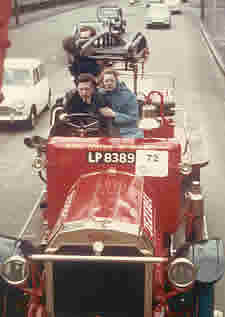 Twenty miles south of London, the ticking became a knocking which a few miles from Brighton led us to flag down one of the support vehicles, labelled ‘Pratt of Sutton’, which, since this was a heavy goods vehicle rally, was the largest tow truck we had ever seen. Our fire engine had nowhere to attach brackets and was too heavy to winch up, so we used about ten feet of boat rope and I stayed very alert while under tow. My girlfriend was very supportive, and I have a picture of her taken by one of our crew who rode in the truck. With her arm bravely round me she has an expression of pale terror. At the Brighton Concours d’Elegance Jezebel was much admired by an enthusiastic crowd, most of whom had missed her embarrassing arrival. Eventually the audience dispersed and some creative engineering permitted her to be towed away by Pratt's monster, more conventionally but with some ignominy. (Photograph on the left;Tony, Pat, Brighton (under tow)).
Twenty miles south of London, the ticking became a knocking which a few miles from Brighton led us to flag down one of the support vehicles, labelled ‘Pratt of Sutton’, which, since this was a heavy goods vehicle rally, was the largest tow truck we had ever seen. Our fire engine had nowhere to attach brackets and was too heavy to winch up, so we used about ten feet of boat rope and I stayed very alert while under tow. My girlfriend was very supportive, and I have a picture of her taken by one of our crew who rode in the truck. With her arm bravely round me she has an expression of pale terror. At the Brighton Concours d’Elegance Jezebel was much admired by an enthusiastic crowd, most of whom had missed her embarrassing arrival. Eventually the audience dispersed and some creative engineering permitted her to be towed away by Pratt's monster, more conventionally but with some ignominy. (Photograph on the left;Tony, Pat, Brighton (under tow)).
© 2007 Imperial College London
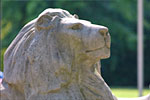
Through the first decade of the twenty-first century the campaign seeks to philanthropically raise £207 million from Imperial’s alumni, staff and friends, and donations from charitable foundations and industry.
Where your support can make a differenceGive now

Imperial’s Centenary Year provides an opportunity to recognise and celebrate members of the Imperial community.
View staff and student portraits
